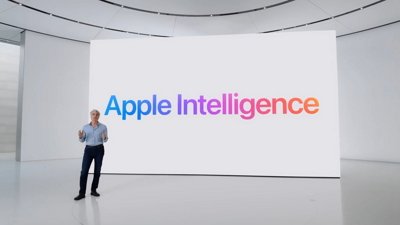Exclusive: Pop the lid off an Apple TV, the new wireless streaming media device from Apple, Inc., and you'll find that it's built around an aging Pentium M-based Intel processor and other yesteryear notebook technologies.
But for the most part, Apple in its public disclosure on Apple TV has foregone the nitty-gritty of processor specifics, bus speeds and video decoding technology. The omissions have driven some enthusiasts crazy, but we think we've finally got answers.
According to those familiar with the component makeup of Apple TV, it utilizes a 1.0GHz Pentium M-based chip (code-named "Crofton"), which has been under-clocked to run on a 350MHz bus. The chip is based on Intel's pre-Core Duo "Dothan" core and includes 2MB of L2 cache.
Aiding the Pentium M in video decoding are a nVidia G72M with 64MB DDR2 video memory (essentially the GeForce Go 7400) and 256MB of 400MHz DDR2 main system memory, the latter of which is reportedly soldered to the logic board.
Meanwhile, the device's internal 40GB hard disk drive — a 2.5-inch PATA — serves as a local storage for 50 hours of movies and TV shows, 9,000 songs, or 25,000 pictures. Users can sync their entire iTunes libraries to the drive but will need an internet connection when attempting to play back licensed content purchased from the iTunes Store.
Apple TV can join a wireless network in one of two ways — over 802.11n wireless technology or through high-speed 10/100 terrestrial ethernet. However, it won't function as its own wireless router nor will it support Apple's AirTunes technology. Similarly, it doesn't include Bluetooth.
The sole purpose of the device is to act as a set-top box that will stream audio and video content from up to five iTunes libraries to a enhanced-definition or high-definition widescreen TV.
Wireless technology, according to those familiar with Apple TV, is delivered through the combination of an 802.11n mini PCIe card and five wireless antennas spread throughout the device's chassis — two for data transmission and three for data reception. A fan is also included for cooling, those people say.
Although each Apple TV ships with a USB port, it is offered purely for services and diagnostics purposes.
When it ships in February, Apple TV will require the forthcoming releases of iTunes 7.1 and QuickTime 7.1.5.
Published Sunday 5:00pm ET as part of Monday's early morning edition.
 Kasper Jade
Kasper Jade







-m.jpg)






 William Gallagher
William Gallagher
 Malcolm Owen
Malcolm Owen
 Wesley Hilliard
Wesley Hilliard



 Christine McKee
Christine McKee





-m.jpg)




144 Comments
interesting that apple TV has a better graphics processor than the macbook!
Nobody seems to have an answer: Does it HAVE to be a widescreen TV? Or can it be 480p 4:3 ratio?
Nobody seems to have an answer: Does it HAVE to be a widescreen TV? Or can it be 480p 4:3 ratio?
Progressive scan 4:3 TVs should work.
What does that mean? Will a 30" TV bought in 1994 likely be able to be used with the apple TV?
What I want to know is if standard old full screen 4:3 aspect ratio TVs that have progressive scan will work with Apple TV. Thanks Galley, I sure hope you're right. Otherwise I'd have to buy a new widescreen TV just so it would work, and I'm sure not going to do that.